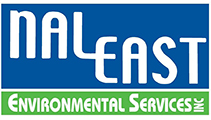A Volatile Organic Compound (VOC) scan is the best way to prove that the chemical compounds present at a particular location are present at very low and acceptable levels.
A TO-15 Summa canister is used to determine what chemical compounds are present and at what levels. This will verify if any unusual chemical compounds are present and well as what the levels are. This sampling method is extremely helpful if trying to determine an unusual chemical compound is present and if the chemical compounds (Volatile Organic Compound (VOC’s) detected are at slightly elevated or extremely elevated. The TO-15 produces more reliable data than other methods. The TO-15 Summa canister can be used for a wide breadth of compound types. This sampling will tell us what you can’t see, including what chemical compounds are present and at what levels. This kind of sampling identifies exactly what chemical compounds are present and at what levels by using the EPA, DEP, Pennsylvania Residential, NIOSH and OSHA guideline levels. By sampling in different locations throughout the property, if anything is elevated, we will be able to pinpoint the exact clean-up, (where it is coming from and how to reduce it).
In cases where there was a spill and/or spills, this sampling will determine the extent of the clean-up and/or if it has been remediated correctly with low and acceptable levels. If sampling was conducted before the clean-up, these results can confirm that the levels are now low and acceptable and/or much lower than they were before. This is the recommended sampling method by the New Jersey and Pennsylvania Department of Health, Division of Environmental Health Assessment.
Volatile organic chemicals (VOCs) are emitted as gases from certain solids or liquids. VOCs include a variety of chemicals, some of which may have short or long-term adverse health effects. VOCs are emitted by a wide array of products numbering in the thousands. We will be able to determine if it is a chemical compound linked to sewer gas, gasoline products, foods or other chemicals.
We will be able to confirm exactly what chemicals are present and at what levels and if it is an elevated level or not using United States Environmental Protection Agency (USEPA) guideline levels, the Department of Health (DOH), the Department of Environmental Protection Residential (DEP) guideline levels as well as the National Institute for Occupational Safety and Health (NIOSH) and the Occupational Safety and Health Administration (OSHA) guideline levels.
TO-15 collection and analysis affords the best approach to prove and verify what chemical compounds (volatile organic compounds) are present.
Each sample is collected by drawing air through an orifice into an evacuated fused silica-lined stainless-steel canister (SUMMA). The canisters are analyzed in the laboratory, where they are first pressurized with nitrogen. Aliquots of the air sample are withdrawn, cryofocused, and analyzed by gas chromatography/mass spectrometry to determine the concentrations of compounds collected.
The sampling event shall be conducted by collecting one indoor air sample from using 6-Liter Summa® canisters and analyzed for VOCs using USEPA Method TO-15. The canister volume is approximately 400 mL. Long-term area samples or personal air samples may be collected. The sample time ranges from 2-hours and may go all the way up to 24-hours. In some instances, sampling for up to twenty-four (24) hours is possible. This sampling will determine what is causing the odors, what chemical compound it is, where it is coming from and it will tell you the source as well. We can also provide you with, based on what chemical compounds are present and what the levels are, we can provide you with a remedy on how to reduce and/or eliminate the issues. We will guide you from beginning to end.
While we always hope that the levels are under permissible exposure limits (PEL), in many instances, it may be coming from an outside source. We use the EPA, NIOSH, OSHA, and the State’s DEP’s guidelines to compare every chemical compound detected. The results will also list the possible sources for each chemical compound detected. That way, we will be able to give you recommendations on how to reduce and/or eliminate the chemical compounds detected. We will be able to get you all the information that you’ll need.
